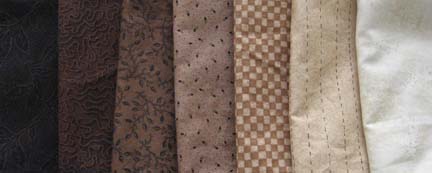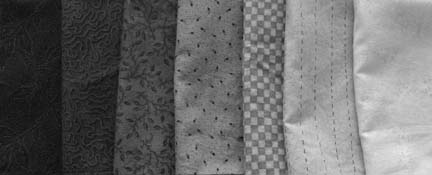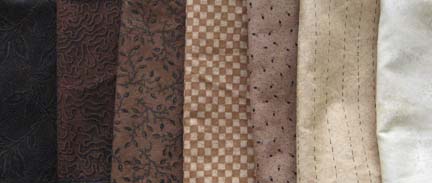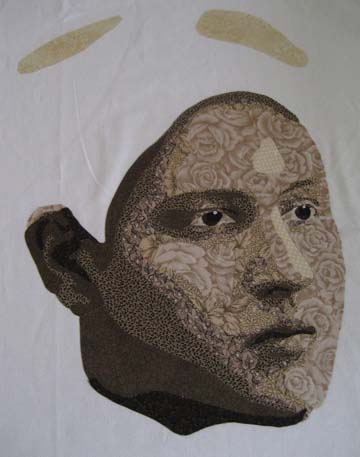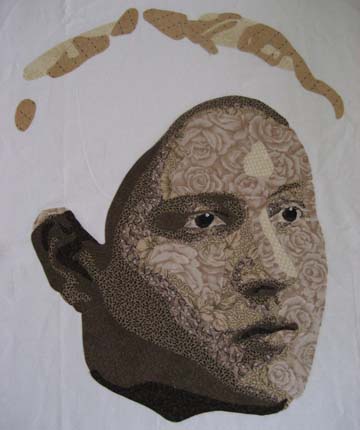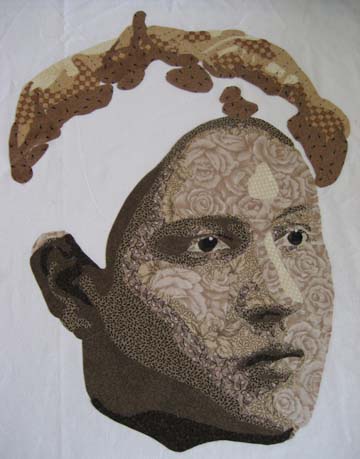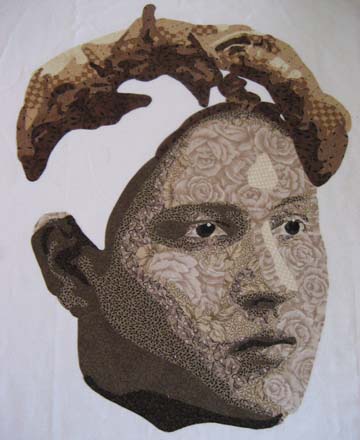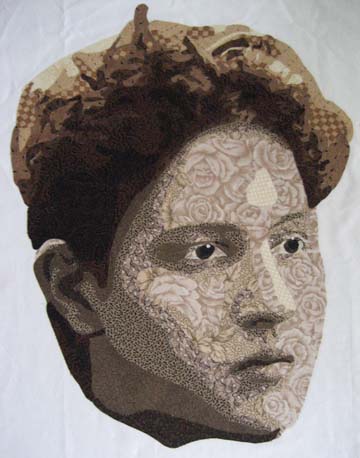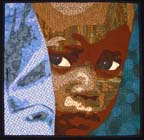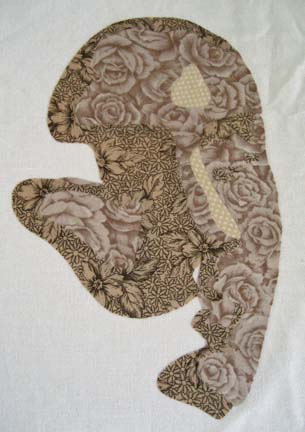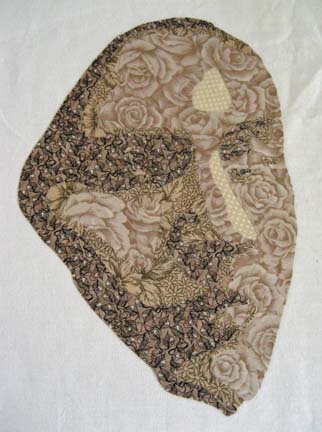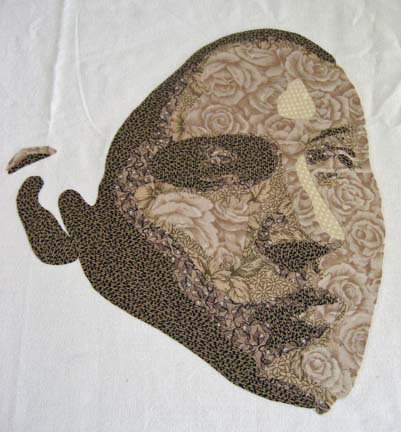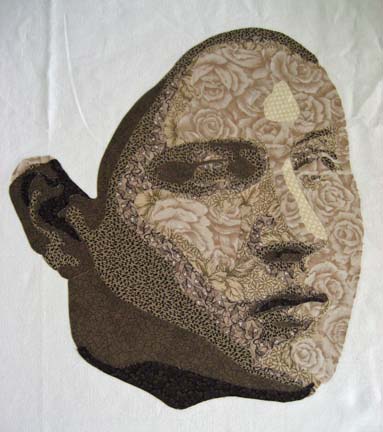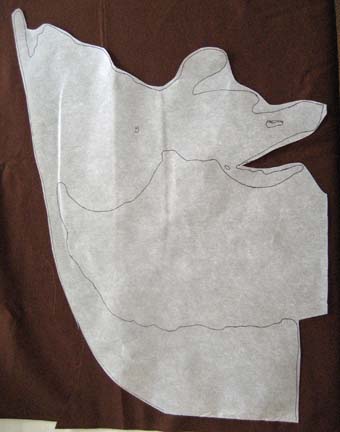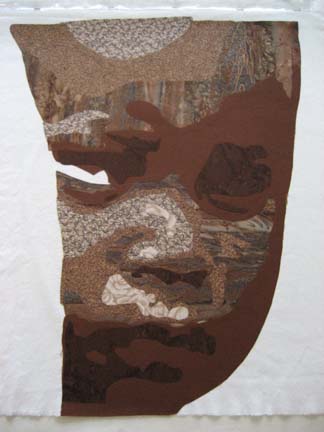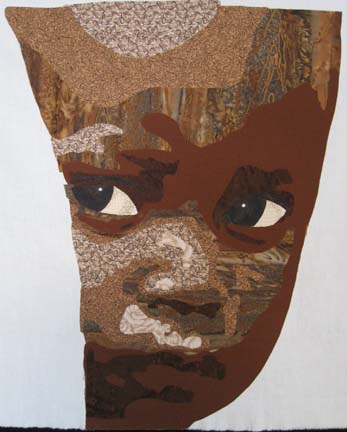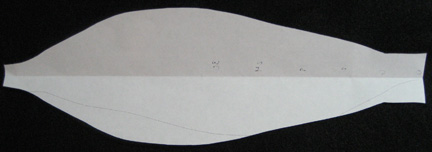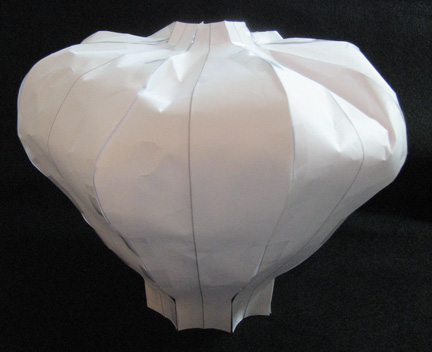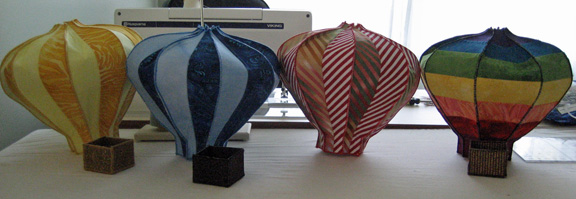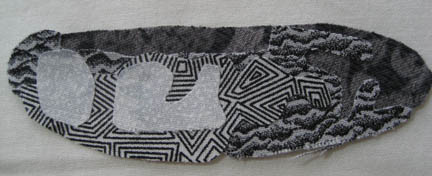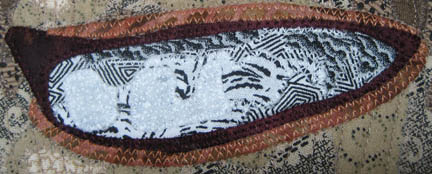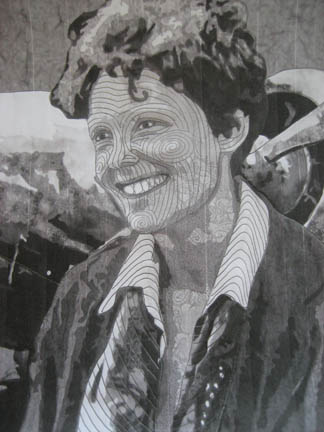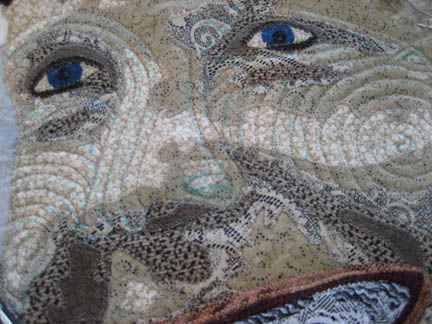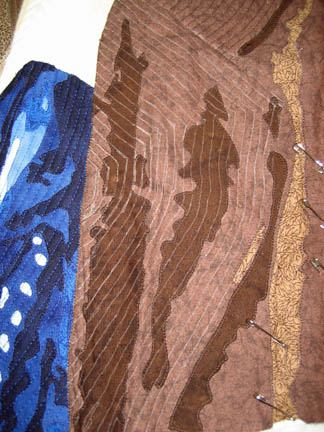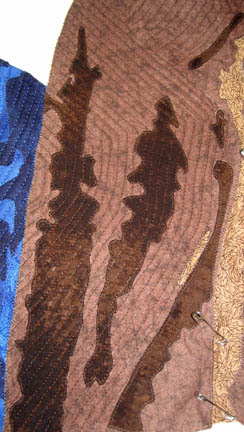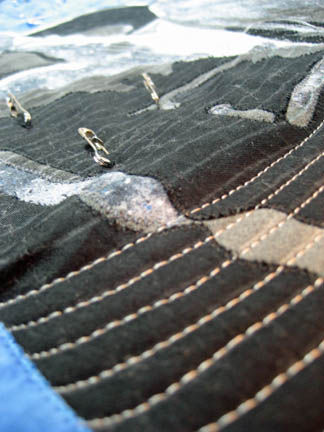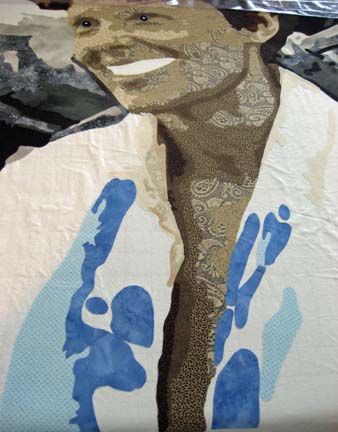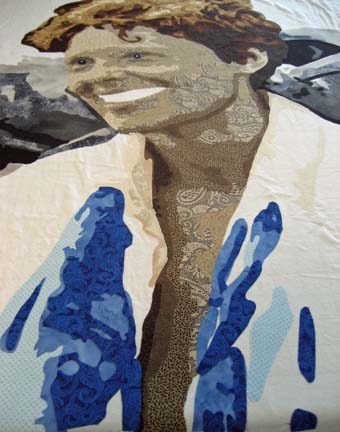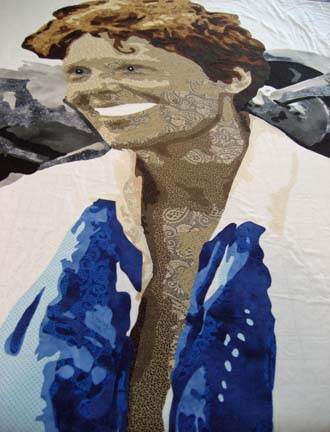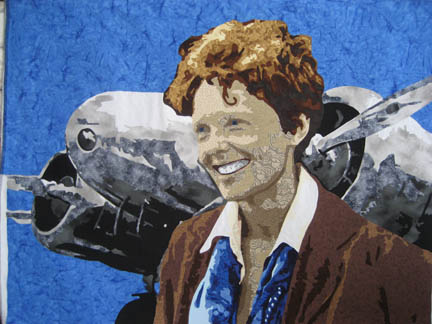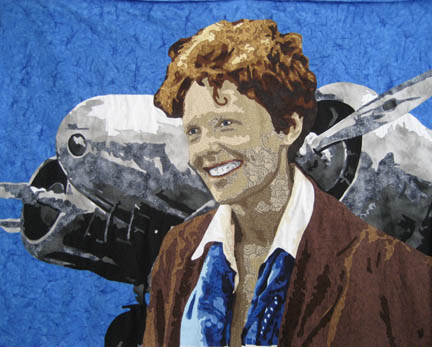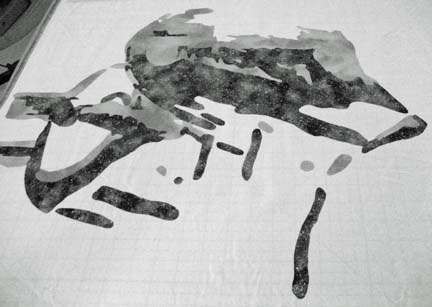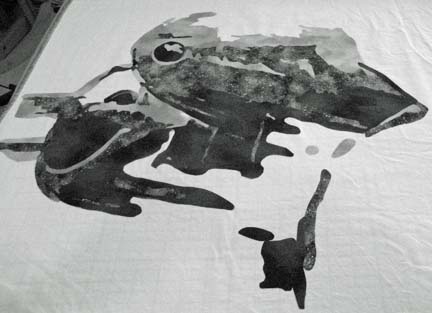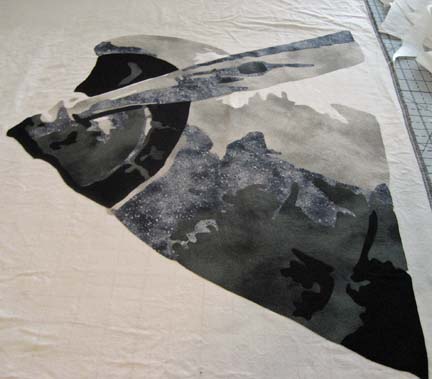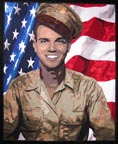Butterscotch makes me think of fall — warm apple cider, crisp cold air, leaves in all shades of brown and orange. Since we’ve have a chill in the air here, I’ve welcomed fall’s return — and I’ve tried to beckon its haste with the scent of homemade soups brewing in my kitchen.
And that is probably why I started with butterscotch as the beginning for Arminta’s hair. Just like with the face, I challenged myself to do seven values. I knew that I could begin with yellow highlights & work myself back to brown. I had several fabrics in my stash but ended up going fabric shopping for the set. Luckily, I was able to find a great range.
I don’t talk about fabric very much but I should. It is really the most important thing as far as I’m concerned — it is all about color and value. If your values don’t work — your piece won’t work — the illusion won’t work. Color is second IMHO to value. I don’t shop for colors — I pick a color family and then I look for values. I rarely buy a fabric just because I like it — I buy it because I need it. If I LOVE an individual fabric — then I need to make something with it like a cellphone case or Kindle cover that I’ll look at a lot. I don’t need to love the fabrics in my portraits because they work together — and they shouldn’t stand out individually.
This is what I came up with.
I always look at the fabrics in black & white to make sure that the values work. Pattern can really affect value — the checkerboard here for instance.
So I switched the checkerboard with the next darker value.
But you can see in black & white that it doesn’t work here. It needs to be back where it was. If you look at it in Photoshop & minimize it way down — there isn’t a lot of definition between the checkerboard & the brown next to it — so it’s a risk. But I decided that the checkerboard is a great bridging fabric between the yellow and the brown — it brings the continuum together.
And so I started with her hair. Using the yellow on top, you think that she may end up looking blonde — but these are merely the highlights.
The next color is still yellow but moving into butterscotch.
And then the next fabric is the wonderful checkerboard that moves us into the browns.
The fourth value is the first of the browns and the primary color of her hair — although we’re still at this point only working on the very top of her hair.
The next value begins to show us the how it will begin to pull together.
And the last two values complete the look.
I think she’s a very handsome woman. The highlight on her ear looks a little stark — hopefully, once I add the background, it will make more sense.

